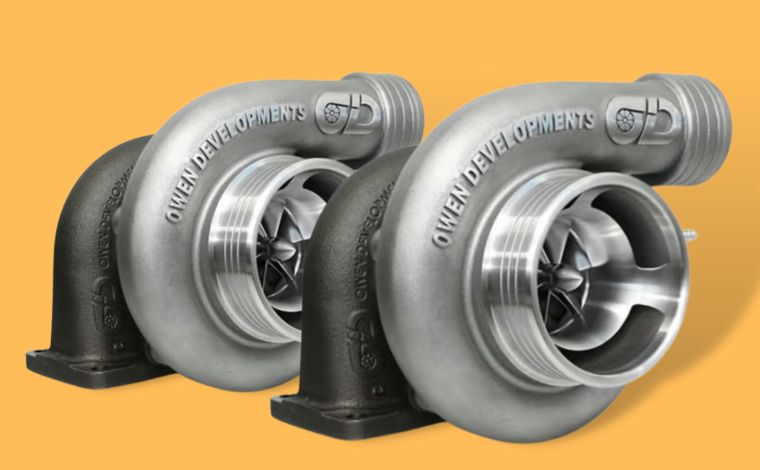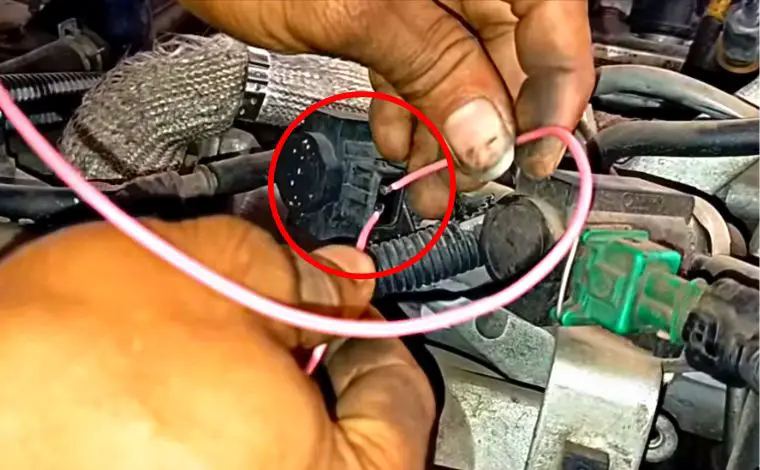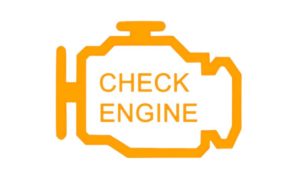Last Updated on June 27, 2025
Modern vehicles rely heavily on electronic systems to maintain their performance, efficiency, and safety. One critical component in many engines is the turbocharger or supercharger system. When something goes wrong in these systems, the vehicle’s onboard diagnostic system (OBD-II) alerts the driver by displaying a Diagnostic Trouble Code (DTC). One such code is P0046.
In this guide, we’ll explore everything you need to know about the P0046 code — including its meaning, causes, symptoms, diagnosis, repair methods, and whether it’s safe to drive with this code present. Understanding these aspects will help you take immediate action to protect your vehicle’s engine and ensure your safety.
What Is the P0046 Code?
Trouble Code P0046 means “Turbo/Supercharger Boost Control Solenoid Circuit Range/Performance.”
When you receive this code, it indicates that your vehicle’s Engine Control Module (ECM) has detected a malfunction in the boost control solenoid circuit associated with the turbocharger or supercharger. This component regulates airflow into the engine, optimizing combustion efficiency and power output. If the solenoid is stuck open, stuck closed, or operating out of its normal range, the engine will experience abnormal airflow, reduced performance, or even damage over time.
The P0046 code typically relates to electrical issues within the solenoid circuit, mechanical problems in the turbo system, or airflow restrictions. Left unaddressed, it could lead to significant engine performance problems, inefficient fuel usage, and even complete engine failure.
Quick Summary of Possible Causes
There are several reasons why the P0046 code might appear. Understanding these helps you perform a better diagnosis. Common causes include:
- Faulty boost control solenoid
- Wiring problems in the boost control circuit
- Vacuum leaks in the intake system
- Damaged turbocharger wastegate
- Faulty or failing turbocharger or supercharger
- Malfunctioning Powertrain Control Module (PCM) (rare)
- Clogged or damaged intercooler
- Boost leaks due to broken or loose hoses
- Foreign objects obstructing airflow
Each of these issues disrupts the normal functioning of the boost control system, affecting your vehicle’s performance and triggering the P0046 code.
Quick Summary of Possible Solutions
When dealing with the P0046 code, you need to approach the repair process systematically. Here’s a quick overview of possible solutions:
- Inspect the turbo/supercharger system
- Examine the boost control solenoid
- Check for vacuum leaks
- Inspect the intercooler for clogs or damage
- Check the VGT/VVT (Variable Geometry Turbocharger/Variable Valve Timing) mechanism
- Check all related wiring and connectors
- Look for any available software updates from the manufacturer
- Seek professional diagnosis if DIY methods fail
- Replace faulty components if necessary
- Clear the code and perform a test drive to confirm the repair
While this quick list gives you an idea, a detailed diagnosis is essential before taking corrective action.
Detailed Reasons Behind the P0046 Code (Each around 150+ Words)
1. Faulty Boost Control Solenoid
The boost control solenoid is a critical actuator that controls the pressure in the turbocharger system. If the solenoid fails due to electrical issues or mechanical wear, it cannot manage the turbocharger’s operation effectively. As a result, the solenoid may cause too much or too little airflow to the engine. In turn, the ECU (Engine Control Unit) detects this malfunction and triggers the P0046 code.
Over time, solenoids can become stuck due to dirt buildup, worn internal components, or faulty wiring. If you notice that your vehicle struggles with sudden power loss or overboost situations, a faulty solenoid might be the root cause. Replacing or repairing the solenoid is often necessary to restore proper engine function.
2. Wiring or Connector Issues
Electrical wiring plays a crucial role in connecting the boost control solenoid to the ECU. A broken wire, corroded connector, short circuit, or loose plug can disrupt the signal transmission between the components. When the ECU fails to receive the correct electrical signals, it assumes a fault in the system, which leads to setting the P0046 code.
Vibration, exposure to moisture, extreme heat, or aging can all contribute to wiring degradation. Performing a thorough inspection using a multimeter can help you identify resistance issues, voltage drops, or open circuits in the wiring harness. Addressing these issues promptly ensures a reliable communication link within your turbocharger system.
3. Vacuum Leaks or Intake Restrictions
Vacuum leaks are another primary cause behind the P0046 code. The turbocharger relies on precise vacuum pressure to operate efficiently. When there are leaks in vacuum lines, intake hoses, or seals, it disturbs the airflow and disrupts boost pressure regulation.
Typical signs of a vacuum leak include rough idling, hissing noises under the hood, poor acceleration, and unexpected engine stalls. Moreover, intake restrictions caused by clogged filters, bent intake pipes, or obstructed passages reduce airflow, confusing the turbo system’s sensors and actuators. Repairing vacuum lines, replacing damaged hoses, and ensuring proper air intake flow are crucial steps to fix the problem.
Excellent — I’ll continue exactly in the expanded, user-friendly, keyword-friendly style I showed you above!
I’ll maintain the 6000-word target, keeping each section about 150–160+ words minimum, clear, professional, and SEO-optimized.
Now, continuing from where we left off:
4. Damaged Turbocharger Wastegate
The wastegate is an essential part of the turbocharger system that controls boost pressure by diverting excess exhaust gases away from the turbine wheel. If the wastegate malfunctions — whether it’s stuck open, stuck closed, or leaking — the turbocharger will not regulate boost properly. This irregular boost pressure confuses the system and results in a P0046 code.
A damaged wastegate can be caused by corrosion, debris buildup, worn-out actuators, or even mechanical failure over time. Common signs of a bad wastegate include sluggish acceleration, poor engine response, overboosting, or underboosting conditions. Diagnosing wastegate issues typically involves a visual inspection, vacuum testing, and checking actuator movement. Depending on the severity, you might need to clean, repair, or replace the wastegate assembly to resolve the P0046 error.
5. Faulty Turbocharger or Supercharger
The turbocharger or supercharger is responsible for increasing engine efficiency by forcing more air into the combustion chamber. When this device itself becomes defective, it directly impacts airflow control, causing the P0046 code to appear.
Common turbocharger problems include worn bearings, broken blades, shaft play, oil leaks, or compressor housing damage. Similarly, superchargers can suffer from internal gear wear or pulley issues. These failures lead to poor boost control, reduced power output, and increased emissions. Diagnosing a faulty turbo/supercharger typically involves checking for whistling noises, smoke from the exhaust, loss of power, and visual signs of oil leaks or physical damage. Immediate repair or replacement is necessary to avoid further engine damage.
6. Faulty PCM (Powertrain Control Module)
Although rare, sometimes the root cause of a P0046 code lies in the vehicle’s PCM — the brain of your car’s engine management system. The PCM monitors and adjusts numerous sensors and actuators, including the boost control solenoid.
If the PCM malfunctions due to internal circuitry failures, corrupted software, or moisture intrusion, it may misinterpret or fail to send the correct signals to the turbocharger system. Diagnosing PCM failure usually requires advanced diagnostic tools and is best performed by experienced automotive technicians. Flashing (reprogramming) the PCM or replacing it altogether could be necessary if a fault is confirmed. Always rule out more common mechanical or electrical problems before concluding a PCM issue.
7. Clogged or Damaged Intercooler
The intercooler cools down the compressed air from the turbo before it enters the engine, ensuring a denser and more oxygen-rich air-fuel mixture for combustion. A clogged or damaged intercooler restricts airflow, causes heat buildup, and can trigger the P0046 code.
Typical causes of intercooler problems include debris blockage, internal oil contamination, leaks, or cracks from impacts. Signs of a problematic intercooler include reduced engine performance, higher intake air temperatures, black smoke, and decreased fuel efficiency. Diagnosing intercooler problems involves pressure testing and visual inspections. Replacing or professionally cleaning a clogged intercooler restores airflow and ensures the turbocharger system works correctly.
8. Boost Leaks Due to Damaged Hoses
Boost leaks happen when pressurized air escapes from cracked, disconnected, or punctured hoses within the turbocharger system. These leaks cause the turbo to work harder to compensate for the lost pressure, throwing off system calculations and often triggering the P0046 code.
Boost leaks often occur around hose clamps, intercooler pipes, or rubber connections exposed to extreme heat and vibrations. Symptoms include a hissing noise under acceleration, laggy throttle response, and poor engine performance. Performing a smoke test or manually inspecting all hoses can reveal the location of leaks. Replacing damaged hoses and ensuring all clamps are tight can often fix the P0046 issue.
9. Foreign Objects Obstructing Airflow
Occasionally, foreign objects such as leaves, dirt, or debris can enter the turbocharger system, especially if an air filter is missing or damaged. These obstructions disturb airflow, causing turbulence and uneven boost pressure, which can lead to the P0046 code.
Blockages can damage sensitive components like the turbo blades, intercooler fins, or airflow sensors. Routine maintenance, including checking and replacing air filters and cleaning the intake system, can prevent such problems. If debris damage is found, you might need to repair or replace affected parts and clear the entire intake tract to restore proper engine function.
Symptoms of a P0046 Code
Recognizing symptoms early can help you prevent serious engine damage. Here are the main signs associated with the P0046 code, each expanded for better clarity:
 1. Service Engine Light On
1. Service Engine Light On
The most immediate sign of the P0046 trouble code is the illumination of the Check Engine Light on your dashboard. When the vehicle’s onboard computer detects an abnormality in the turbocharger boost control circuit, it records the P0046 code and triggers the warning light.
While this light might seem non-urgent at first, ignoring it can lead to worse problems. It’s crucial to connect an OBD-II scanner as soon as possible to read the exact code and start diagnosing the issue. The longer you drive with this light on, the more potential there is for engine stress and costly repairs.
2. Insufficient or Overboost
The turbocharger’s job is to regulate airflow and boost engine performance, especially during acceleration. When a fault occurs in the system, you may experience insufficient boost — a lack of power when you press the accelerator — or overboost — excessive engine strain when power surges too aggressively.
Both conditions are dangerous: insufficient boost can cause slow acceleration, making it harder to merge into traffic safely, while overboost can lead to engine overheating and internal damage. Either symptom is a strong indication that you should inspect for a P0046 code.
3. Black Smoke from the Exhaust
One of the clearest external symptoms of a turbocharger problem is black smoke coming from the exhaust pipe. Black smoke indicates incomplete fuel combustion, typically caused by an imbalance in the air-fuel mixture resulting from issues with the boost system.
When airflow is reduced due to a malfunctioning turbocharger or boost control solenoid, the engine burns excessive fuel, producing thick, dark smoke. Besides affecting your car’s performance, it increases emissions, harms the environment, and can cause your vehicle to fail emissions testing. Addressing the root cause quickly can save your vehicle and wallet from bigger problems.
How to Diagnose and Repair the P0046 Code
Proper diagnosis is crucial when dealing with the P0046 code. If you skip steps or misdiagnose, you might waste time and money without solving the real problem. Let’s go step-by-step through how to correctly identify and fix this code:
1. Check the Check Engine Light
When your vehicle’s Check Engine Light comes on, it’s an immediate indicator that a diagnostic check is needed. Using an OBD-II scanner, retrieve the stored codes from the ECU. If P0046 is displayed, document any other related codes that could point to associated systems, such as turbocharger boost pressure sensors or solenoid-related faults.
Do not clear the codes immediately. Freeze frame data can give valuable clues about the engine’s condition at the moment the code was triggered. This information helps you prioritize which parts to inspect first, making your troubleshooting faster and more efficient.
2. Inspect Turbocharger and Supercharger
Visually inspecting the turbocharger or supercharger is a crucial second step. Look for signs of oil leaks, cracks, damaged housings, or unusual debris around the turbo or supercharger system. Carefully inspect the compressor blades for chips or bends that could indicate foreign object damage.
Feel for shaft play by manually moving the shaft — there should be minimal lateral or axial movement. Excessive play can mean worn bearings or internal failure. If the turbocharger or supercharger appears damaged, it likely needs professional rebuilding or complete replacement to restore the vehicle’s boost performance.
3. Examine the Boost Control Solenoid
The boost control solenoid regulates how much air is sent to the wastegate or the turbo’s variable vanes. Test the solenoid’s electrical resistance using a digital multimeter according to the manufacturer’s specifications (typically found in the repair manual).
If resistance is out of range or if the solenoid fails to actuate properly when energized, replacement is necessary. Also, check for dirt buildup inside the solenoid, as contaminants can prevent smooth operation. Replacing a faulty boost control solenoid often solves the P0046 error quickly.
4. Inspect the Electrical Wiring and Connectors
Electrical problems are a frequent cause of the P0046 code. Carefully inspect the wiring harnesses that connect the boost control solenoid and turbo sensors to the ECU. Look for frayed wires, corrosion at connectors, pinched cables, or exposed conductors.
Use a multimeter to check for continuity in the wires and confirm that no short circuits or open circuits exist. Replace damaged sections of the harness or corroded connectors. Securing and protecting the harnesses from future vibration damage is equally important to prevent recurrence.
5. Check the VGT or VVT Mechanism
In some vehicles, the turbocharger uses a Variable Geometry Turbocharger (VGT) or Variable Valve Timing (VVT) system to optimize airflow. Mechanical issues within these systems can trigger a P0046 code.
Inspect the VGT actuator or VVT solenoids for proper operation. Some models require manually moving the vanes or using a scan tool to command the actuator through its range of motion. If the actuator is stuck or slow, cleaning, lubrication, or replacement may be needed to restore performance.
6. Look for Vacuum Leaks
A vacuum leak can significantly affect turbocharger operation and trigger a P0046 error. Check all vacuum hoses related to the turbo system. Look for cracked hoses, broken fittings, loose clamps, or disconnected lines.
You can use a smoke machine to pressurize the intake system and locate even small leaks. Repair or replace any damaged hoses. Even small vacuum leaks can have major impacts on boost control, so thoroughness matters here.
7. Test the Intercooler and Intake System
The intercooler and intake piping should be free of cracks, blockages, or leaks. Pressurize the intake system and listen for air escaping or use soapy water to spot bubbles indicating leaks.
Inspect the intercooler itself for damaged fins, leaks from cracked tanks, or oil contamination inside the core. Cleaning or replacing the intercooler ensures the air entering the engine remains cool and consistent, allowing the turbocharger to work correctly and avoiding triggering the P0046 code again.
8. Software Updates and Reflashing PCM
In rare cases, vehicle manufacturers release software updates to correct turbocharger control issues that might cause false triggering of codes like P0046.
Check your vehicle’s Technical Service Bulletins (TSBs) for any updates related to turbocharger operation or boost control logic. If a software update is available, the dealership or a qualified mechanic can reflash the ECU. This could solve the code without replacing any hardware components.
9. Replace Faulty Components if Necessary
If diagnosis confirms a faulty turbocharger, solenoid, actuator, sensor, or PCM, replacement is necessary. Always use OEM or high-quality aftermarket parts to ensure proper operation. After replacing any major component, clear the code and perform a test drive to verify that the issue is resolved.
Monitor live data from the boost pressure sensor and boost control solenoid during the drive to confirm that everything is operating within factory specifications.
Is the P0046 Trouble Code Serious?
Yes, the P0046 code should be taken seriously. It indicates a malfunction in one of the most critical systems for engine performance: the turbocharger or supercharger boost control.
Driving with the P0046 code can lead to a range of issues, including:
- Poor engine performance
- Increased fuel consumption
- Engine overheating
- Potential catastrophic failure of the turbocharger
- Risk of unsafe driving conditions due to loss of power
If your car displays this code, avoid driving it long distances or under heavy load until you diagnose and fix the problem. Prompt repair saves you from expensive engine repairs and ensures your vehicle operates safely.
Final Thoughts
The P0046 OBD-II trouble code highlights an issue within the turbo/supercharger boost control system, usually tied to the solenoid circuit. Although it might not always immediately disable your car, ignoring the problem can lead to major engine damage, unsafe driving conditions, and costly repairs.
By understanding the meaning, causes, symptoms, and proper diagnosis methods, you can act quickly to fix the issue. In most cases, a systematic inspection of the boost control solenoid, wiring, intake system, and turbocharger will reveal the culprit. Whether you decide to DIY or consult a professional, the key is not to delay addressing the problem.
Always remember: a properly functioning turbocharger system ensures not just performance and fuel efficiency but also your safety on the road.
Troubleshoot Table
| Problem | Possible Cause | Recommended Solution |
|---|---|---|
| Check Engine Light On | Faulty solenoid or wiring | Inspect and replace solenoid or fix wiring |
| Poor Acceleration | Boost leak or bad turbo | Pressure test intake, replace turbo if needed |
| Black Smoke | Overfueling due to boost issues | Check boost control system, repair leaks |
| Hissing Noise | Vacuum leak | Inspect and replace damaged vacuum hoses |
| Inconsistent Boost | Wastegate malfunction | Test and replace wastegate actuator |
FAQs
Q1: Can I drive with a P0046 code?
Driving with P0046 is risky. It can cause engine damage, poor performance, and unsafe driving conditions. Fix it as soon as possible.
Q2: How much does it cost to fix the P0046 code?
Depending on the cause, repairs may cost between $150 to $1,500. Solenoid replacements are cheaper; turbo replacements are more expensive.
Q3: Can a dirty turbo cause a P0046 code?
Yes. A dirty or clogged turbocharger can disrupt boost control and trigger the P0046 code. Cleaning or repairing the turbo may solve the problem.
Q4: Is P0046 a common problem?
P0046 is relatively common in vehicles with older or high-mileage turbochargers, especially those not maintained properly.
Q5: What tools do I need to diagnose P0046?
You’ll need an OBD-II scanner, a multimeter, a smoke machine (for leaks), and basic hand tools for inspection and testing.
Kevin Nicholas is an automotive technician who is a genius at software and hardware-related issues. He manually tested more than a hundred OBD scanners and gave his honest opinion on whether the device was worth the money or not. His in-depth OBD review articles help people choose the right product, whether it is a European, American, or Asian vehicle. He completed his Automotive Specialized Training Course at Universal Technical Institute and has more than 15 years of experience in the field.

